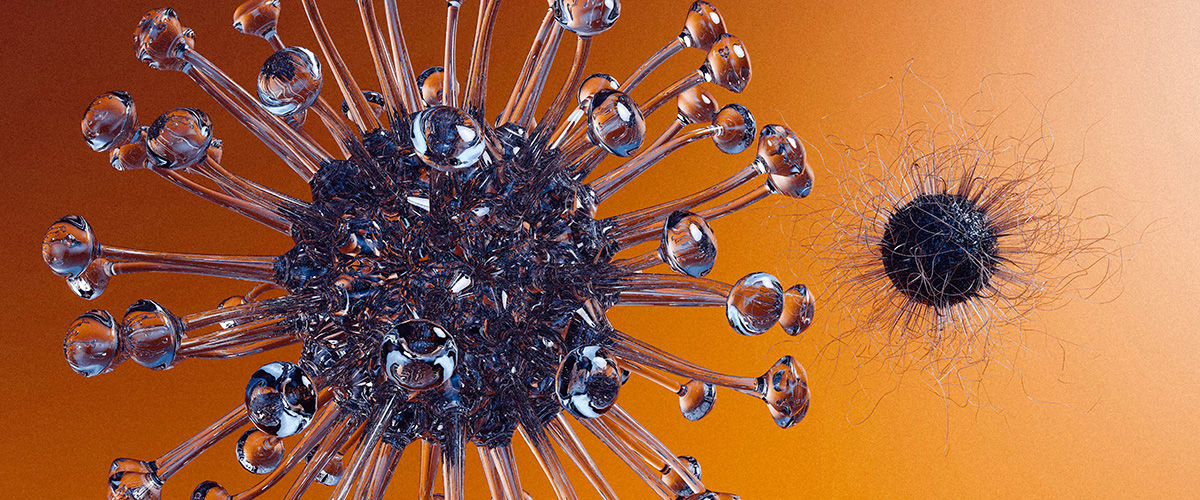There are more than 7,000 around the world. Sometimes they only affect a few dozen people. Their treatment costs a fortune. Welcome to the world of rare and orphan diseases, which pose a challenge for individuals and society.
Rare and orphan diseases: what are they?
Do you know about maple syrup disease? It has nothing to do with an inclination for maple sap.
This disease is characterized by the toxic accumulation in the blood of an amino acid, leucine, explains the Montreal Children's Hospital. This retention eventually gives the urine the typical smell of maple syrup, hence the name. If the disease is diagnosed too late, the child can develop serious health problems, including significant brain damage. In some cases, it can cause death. Rett's syndrome, osteogenesis imperfecta, metachromatic leukodystrophy, myotubular congenital myopathy, multiple osteochondromas, idiopathic angioedema, retinitis pigmentosa, Ehlers-Danlos syndrome, tuberous sclerosis of Bourneville, Hirschsprung, CHARGE syndrome, CRASH syndrome, Krabbe globoid cell leukodystrophy. Are any of these names familiar to you? Welcome to the unknown world of rare diseases!
The Orphanet portal for rare diseases and orphan drugs, which was created in France and has evolved over the years into a consortium of 40 countries, counts more than 7,000. That number does not include those rare diseases which are as yet unnamed, and others are being discovered on a regular basis. In February 2019, Montreal researchers found that a baby who lived less than three months had a gene responsible for a neurological disorder so rare in children that only seven cases have been recorded to date.

In Quebec: the Founders Effect
The Regroupement québécois des maladies orphelines (RQMO) defines a rare disease as a disease that affects fewer than 1 in 2,000 people. However, the vast majority of rare diseases in the province affect only 1 in 100,000, says Gail Ouellette, founder of the RQMO. The organization estimates that 1 out of every 20 Quebecers suffers from or is a carrier of a rare disease, which represents nearly 500,000 people out of a population of 8,341,000. Across the country, rare diseases affect 2.5 million Canadians.
In Quebec, some of the rare diseases are attributable to the "Founder Effect". It is said that there is a founding effect when a new population is created from a relatively small number of migrants from a mother population, says the Corporation de recherche et d’action sur les maladies héréditaires (CORAMH). These founding effects have led to an increase in the frequency of certain gene mutations responsible for hereditary diseases in several regions.
In Quebec, regions such as Saguenay-Lac-Saint-Jean and Charlevoix have many rare diseases such as mucolipidosis type II, recessive spastic ataxia of Charlevoix-Saguenay or tyrosinemia type 1.
These are not the only areas with regional diseases. The MEDNIK syndrome is very present in the Bas-Saint-Laurent, Tay-Sachs disease in Gaspésie, beta-thalassemia in Portneuf, malignant hyperthermia in Abitibi, and triple H syndrome in the south of Province. There is also an ataxia of Beauce and an ataxia of Portneuf.
However, not all rare diseases are due to the Founder Effect. About 80 per cent are of genetic origin. They can also be caused by immune deficits, infections or intoxications during pregnancy. A number are of unknown origin. Many rare diseases are chronic, progressive and fatal.
Among adults
Nearly 75 per cent of rare diseases affect children, but a few appear in adulthood. This is the case of Huntington's disease, says Orphanet Canada. These diseases often take a long time to be diagnosed in adults, and sometimes patients are still sent to seek psychiatric care to treat an imaginary disease when, in fact, they have a disease that has not been identified. This reveals the lack of knowledge among many doctors in this area.
The Montreal Clinical Research Institute (IRCM) says an increasing number of children with rare diseases are living to adulthood thanks to improved treatments that result from successes in biomedical research. Children with rare diseases generally receive better follow up treatment than adults. The Quebec health care system has no specific service for these patients once they leave the pediatric environment. They are not referred elsewhere and lack psychosocial resources. The worst period to suffer from a rare disease is between 18 and 65 years old.
Three years ago, the IRCM began to implement three important partnerships to support the creation of the Research Center on Rare and Genetic Diseases in Adults in Quebec. More recently, research centers on rare and orphan diseases have opened their doors at UQAM and McGill University.
Research is progressing, but there are problems at the clinical level in the health system, says Gail Ouellette. Diagnoses still take too long and one made, it is unclear what to do with the patient in the absence of uniform care. “These people are much more isolated than people who suffer from cancer or heart disease," she says.




